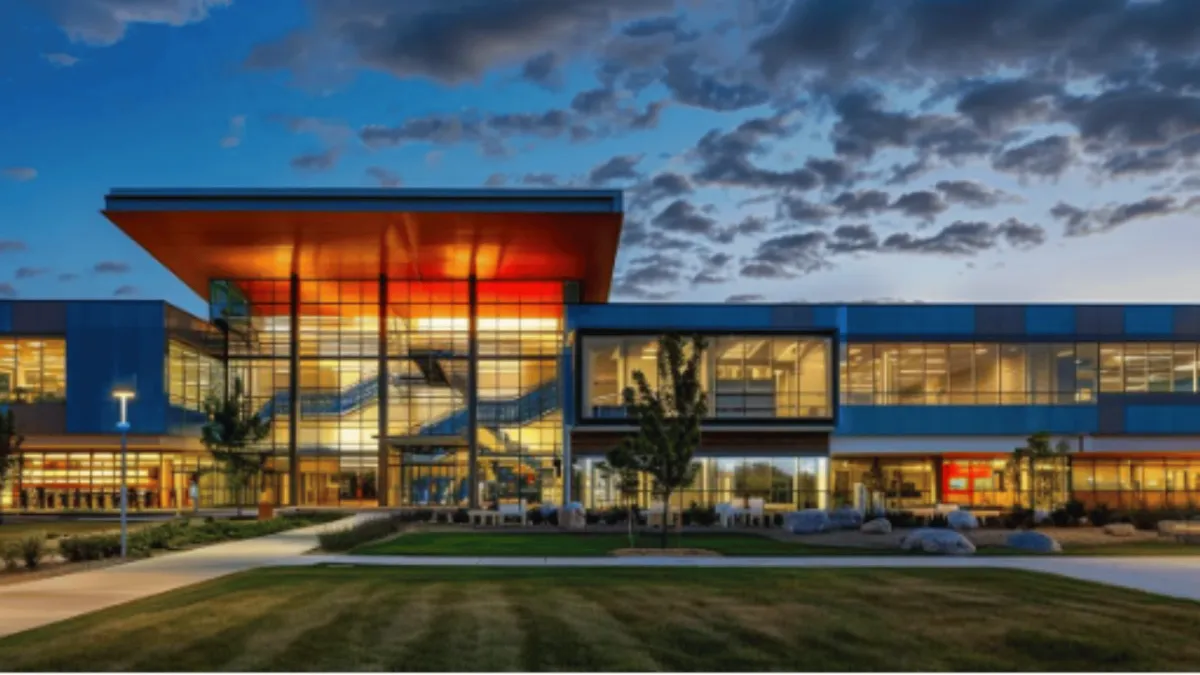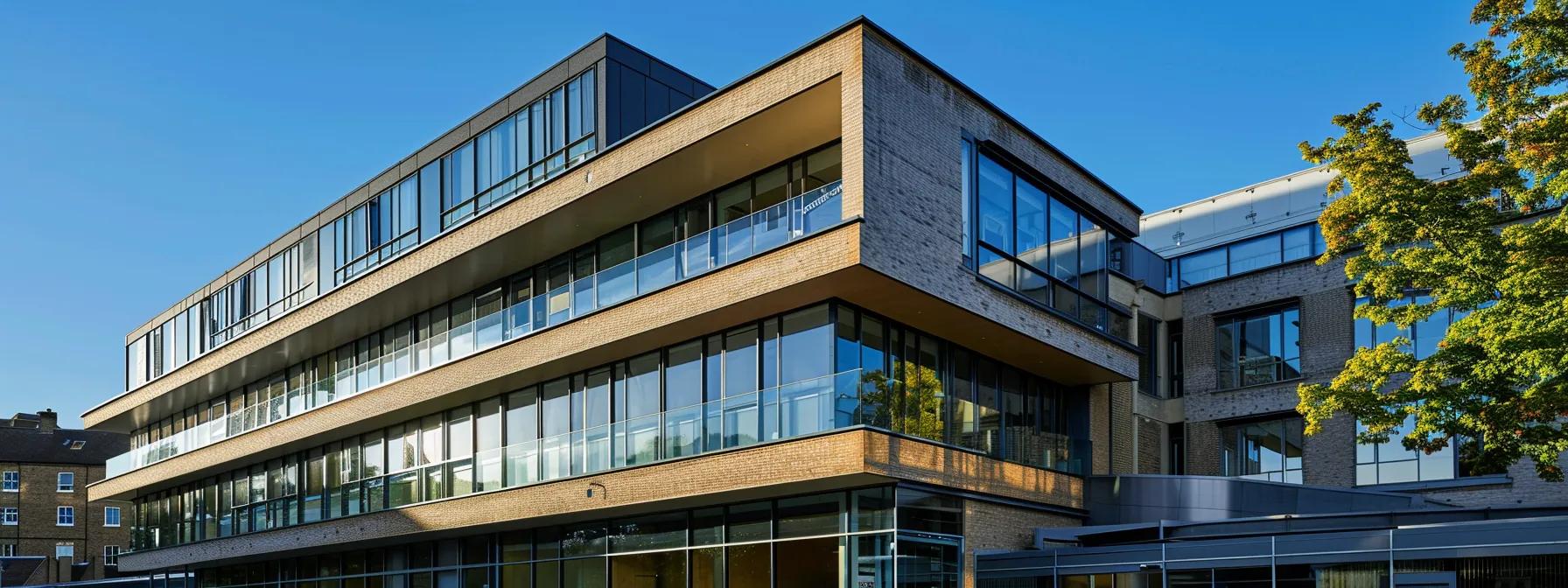
Chiswick Educational Facility Design: Trends, Sustainability, and Innovative School Architecture
In today's evolving education sector, school facility design has taken centre stage. As a senior educational architect with extensive experience in planning innovative learning spaces, I have witnessed how effective design transforms student experiences. This article explores the trends in educational architecture in chiswick, drawing on insights from architects in chiswick and educational architects, and examines how sustainable design and flexible classroom layouts—a focus for school architects—influence modern facility planning. Additionally, anchor text: ee architects provide further case studies that highlight regulatory considerations along with quantifiable insights to ensure facilities are both modern and supportive of student well-being.
What Are the Latest Educational Architecture Trends in Chiswick?
Current trends in chiswick emphasise a balance of technology, sustainability, and user-centred design guided by residential architects chiswick. Modern school buildings, often conceptualised by school architects and supported by educational architects, now feature open, flexible spaces adaptable to various learning modalities. These designs incorporate principles of commercial architecture and occasionally echo the innovative perspectives of ee architects, ensuring collaborative work areas and abundant natural lighting.
How Are Modern Learning Environments Shaping School Design?
Modern spaces incorporate multifunctional areas for both traditional instruction and hands-on learning. Designers create reconfigurable layouts that support project-based learning and group work, facilitating seamless transitions between independent study and collaborative engagement.
What Role Does Technology Play in Contemporary School Architecture?
Technology is integral in modern designs. Features such as interactive whiteboards and integrated network systems improve operational efficiency while meeting digital curriculum demands. Innovative use of technology ensures that learning spaces are adaptable for current educational needs.
How Are Flexible and Collaborative Classroom Layouts Being Implemented?
Classroom flexibility is achieved through modular furniture, movable partitions, and communal spaces. Retractable walls and adjustable seating arrangements allow quick reconfiguration, enabling a smooth transition from lecture-style settings to interactive learning hubs.
How Does Sustainable School Building Design Impact Chiswick Educational Facilities?

Sustainable design not only reduces environmental impact but also creates healthier, energy-efficient spaces. Chiswick schools increasingly adopt green solutions that lead to long-term cost savings and improved indoor air quality.
What Are the Key Features of Energy-Efficient School Buildings?
Energy-efficient designs include high-performance insulation, energy-saving windows, and smart HVAC systems. The use of solar panels and green roofs reduces reliance on fossil fuels and lowers operating costs, with benefits such as up to a 30% reduction in annual energy consumption.
Which Green Building Materials Are Preferred in Chiswick School Projects?
Preferred materials include locally sourced, recycled steel, reclaimed wood, and low-emission concrete. These eco-friendly choices lower carbon footprints and support a circular economy while ensuring durable construction.
How Do BREEAM and LEED Certifications Influence School Design?
Certifications like BREEAM and LEED set benchmarks for energy efficiency, water conservation, and environmental management. Meeting these criteria not only adds market value but also reassures stakeholders of the building's long-term sustainability.
What Case Studies Showcase Successful Sustainable School Designs in Chiswick?
Notable projects, such as a recently completed academy with a green roof and rainwater harvesting system, demonstrate a 25% reduction in energy costs. These examples highlight that sustainable principles can be integrated without compromising design quality.
Who Are the Leading Chiswick School Architecture Firms Specializing in Educational Design?
Numerous firms in Chiswick specialise in educational design, combining modern curriculum demands with sustainability goals.
What Unique Expertise Do Chiswick Architects Bring to School Projects?
Local architects possess deep knowledge of regulatory requirements, climate considerations, and community needs. Their designs seamlessly integrate cultural elements with modern technology, blending heritage with innovation.
How Do Firms Collaborate With Local Councils and Educational Institutions?
Close collaboration with councils and educational stakeholders is central. Regular consultations and site visits help secure planning permission and ensure designs meet both regulatory and educational expectations.
Which Notable School Projects Have Been Completed by Chiswick Firms?
Several independent schools and academies boast innovative learning spaces featuring advanced energy management, adaptive classroom designs, and outdoor learning environments, serving as models for blending functionality with design excellence.
What Are the Best Practices for Designing Schools That Support Student Well-Being and Inclusivity?

Best practices prioritise creating safe, inclusive, and adaptable environments for diverse learning needs, emphasising natural elements and stress-reducing design.
How Can School Design Promote Mental Health and Student Comfort?
Design strategies that promote mental health include calm zones, ample natural light, and biophilic elements. Such environments help improve concentration and reduce anxiety, contributing to increased student satisfaction.
What Accessibility Standards Should Be Integrated Into Educational Facilities?
Strict accessibility guidelines—such as ramps, tactile flooring, and adjustable workstations—ensure all students can navigate buildings safely. Compliance with standards like the Equality Act is vital for inclusivity.
How Can Cost-Effective Design Balance Quality and Budget Constraints?
Innovative design methods, including modular construction and efficient systems, help balance cost and quality. Such strategies can reduce expenses by up to 15% without compromising the overall design and functionality.
How Do Innovative Classroom Layouts Enhance Learning in Chiswick Schools?
Innovative layouts are key to creating adaptive learning environments that promote engagement and collaboration.
What Are the Benefits of Flexible Learning Spaces?
Flexible spaces allow for rapid reconfiguration to suit different teaching methods, thereby improving collaboration, critical thinking, and overall academic performance.
How Are Outdoor Learning Areas Incorporated Into School Designs?
Outdoor areas serve as extended classrooms, using weather-resistant materials and ample seating to encourage hands-on learning and strengthen environmental awareness.
What Technology Integrations Support Modern Classroom Environments?
Interactive displays, wireless connectivity, and digital platforms enhance access to educational resources. IoT devices further optimise energy use and classroom management.
Which Furniture and Equipment Choices Optimise Classroom Functionality?
Ergonomic, modular furniture supports both individual and group work. Adjustable lighting and acoustic panels further refine classroom environments, enhancing comfort and functionality.
What Are the Planning Regulations and Local Considerations for School Architecture in Chiswick?

Local planning policies are critical in shaping school architecture. Strict guidelines ensure that new designs harmonise with the urban fabric and respect historical contexts.
How Do Local Planning Policies Affect Educational Facility Design?
Policies on building height, bulk, land use, and environmental impact require designs to blend with existing urban and historical contexts, ensuring community aesthetics are maintained.
What Are the Steps to Secure Approvals for School Building Projects in Chiswick?
A multi-stage process—including feasibility studies, detailed submissions, and community consultations—helps streamline approvals. Transparent documentation and stakeholder engagement are essential.
How Do Architects Address Community and Stakeholder Feedback?
Through iterative design reviews and public consultations, architects incorporate community suggestions to reflect collective interests and secure lasting support for projects.
What Future Trends Will Shape Educational Architecture in Chiswick?
Future trends point to more adaptive spaces, deeper technological integration, and higher sustainability standards, driven by advances in both pedagogy and environmental engineering.
How Will Changing Learning Styles Influence School Design?
As learning becomes more student-centred, schools will need to offer versatile spaces that support both independent study and teamwork, adapting to evolving curricular needs.
What Emerging Technologies Will Impact Future School Facilities?
Technologies such as augmented reality, artificial intelligence, and IoT will enable personalized learning, real-time performance tracking, and smarter building operations, further enhancing the educational experience.
How Is Sustainability Expected to Evolve in Educational Architecture?
With ongoing advances in renewable energy and green building materials, future projects will likely incorporate next-generation insulation, smart energy grids, and biodiverse landscapes, making sustainability a central pillar of school design.
Table: Comparative Features of Sustainable School Design in Chiswick
Before examining future trends, it is valuable to summarise key features of sustainable design in Chiswick. The table below highlights essential attributes for achieving energy efficiency and environmental sustainability.

This table shows that investments in sustainability yield direct benefits for efficiency and the environment while supporting a resource-efficient learning space.
Frequently Asked Questions
Q: How can sustainable design reduce operational costs in schools? A: Energy-efficient systems and green materials can lower energy use by up to 30% and reduce long-term expenses.
Q: What role do flexible classroom layouts play in modern education? A: They allow for rapid reconfiguration, supporting collaborative work and diverse teaching methods to enhance student engagement.
Q: How do green certifications like BREEAM influence school design in Chiswick? A: They enforce sustainability criteria, ensuring improved energy efficiency, lower environmental impact, and better indoor air quality.
Q: What are the benefits of incorporating outdoor learning areas in school design? A: Outdoor areas provide hands-on, experiential learning opportunities that promote environmental awareness and improve student concentration.
Q: How do local planning regulations affect school construction projects in Chiswick? A: Regulations ensure that design parameters like building bulk and environmental impact align with community aesthetics and sustainable urban planning.
Final Thoughts
In conclusion, Chiswick’s educational facility design sits at the intersection of innovation, sustainability, and community responsiveness. By integrating modern technology with adaptive learning spaces, architects create environments that enhance academic performance and promote environmental stewardship. Adherence to local planning policies and green technologies ensures these facilities remain both relevant and cost-effective. Continuous innovation in design will play a pivotal role in shaping future learning environments that support student well-being and foster academic excellence.